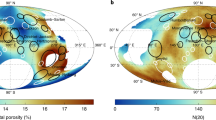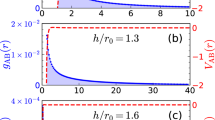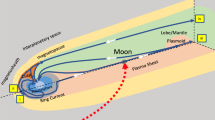Abstract
ON Monday evening, November 20, an unusual halo surrounded the moon from 6.15 to 6.25. The moon was not quite full, and the halo to some extent assumed the form of the moon. The halo consisted of a succession of concentric rings. The ring next the moon was equal to four diameters of the moon, and had a soft yellow-white radiance, almost equalling the moon in brilliancy; it was surrounded by a succession of prismatic rings, red commencement, and proceeding outward orange, yellow, green, blue, indigo, and violet. At 6.15 the chromatic rings were pretty sharply defined, with the exception of the outer one, which was faint and evanescent. Outside of the ring was a corona-like envelope. This aspect continued about five minutes, and during the next five minutes rapidly changed; the edges of the rings became irregular, radii shot from the rings towards the moon, and at 6.25 the phenomenon disappeared.
This is a preview of subscription content, access via your institution
Access options
Subscribe to this journal
Receive 51 print issues and online access
$199.00 per year
only $3.90 per issue
Buy this article
- Purchase on SpringerLink
- Instant access to full article PDF
Prices may be subject to local taxes which are calculated during checkout
Similar content being viewed by others
Author information
Authors and Affiliations
Rights and permissions
About this article
Cite this article
BARKAS, J. An Extraordinary Lunar Halo. Nature 27, 103 (1882). https://doi.org/10.1038/027103b0
Published:
Issue date:
DOI: https://doi.org/10.1038/027103b0



